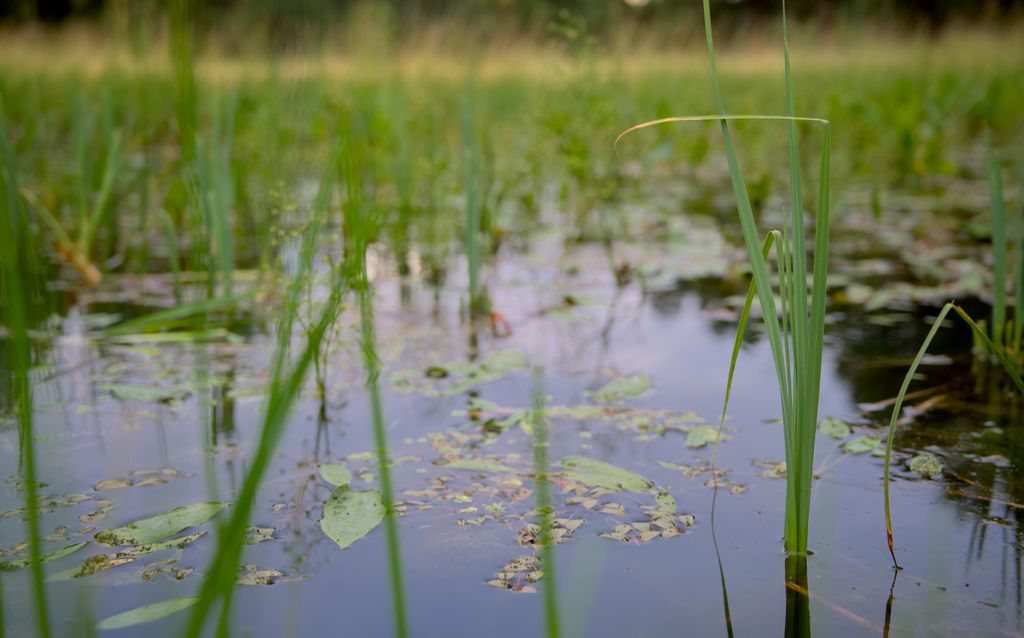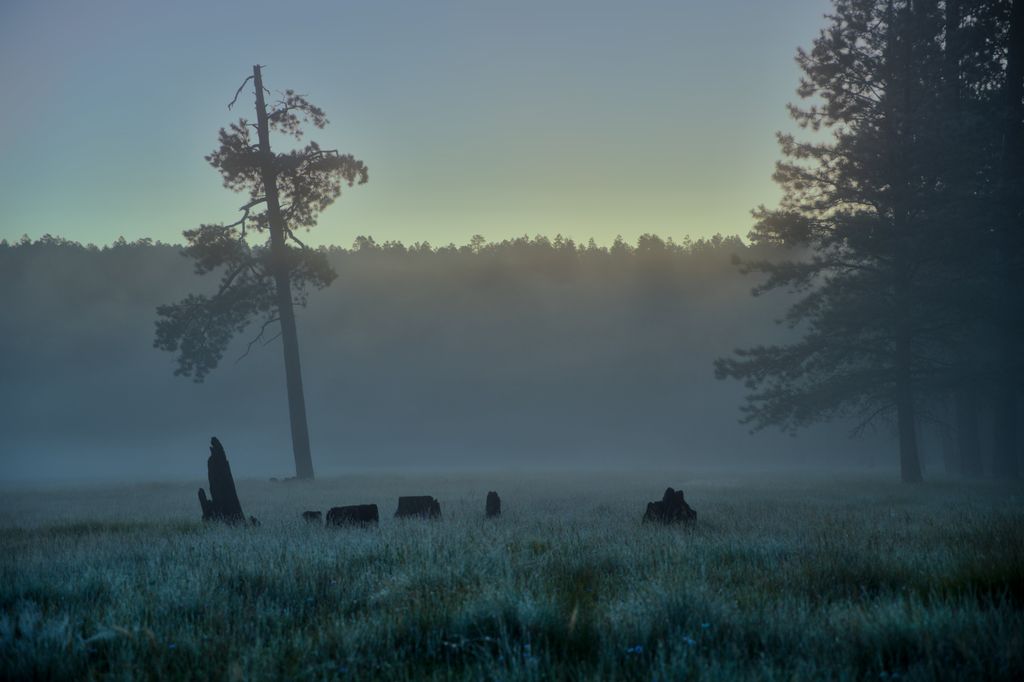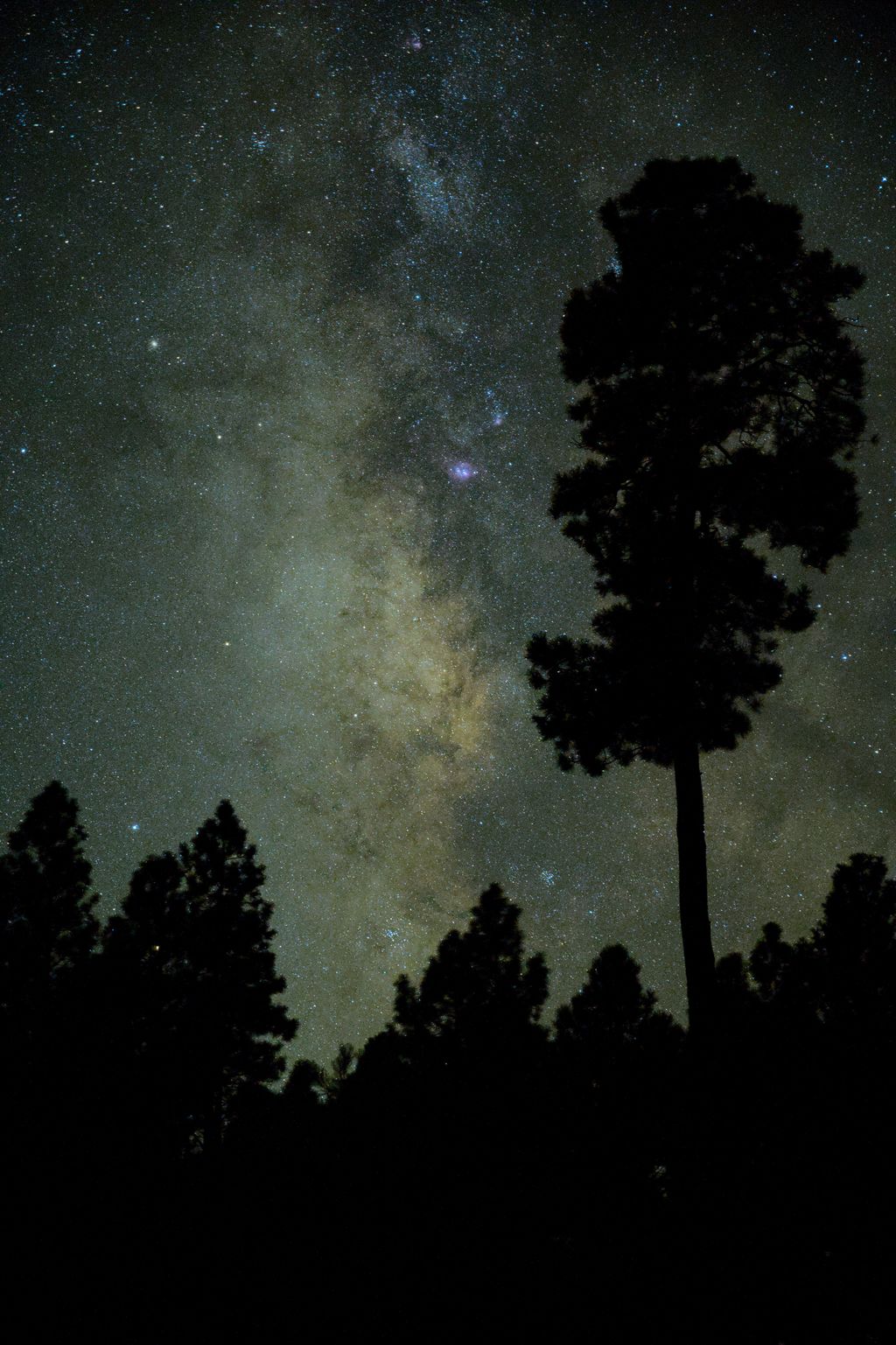For Labor Day, we went RV camping up in the Coconino National Forest. We’ve done this the past two years with friends and have enjoyed it. There turns out to be a reasonable pack of dogs that show up; they all play together. The kids range from 2 to about 10 years old. That age range works well enough to give the adults time to catch up, play games, or cook. It’s a good time and gives us a chance to get outside for a few days.

While there, I opted to wake up early a couple of mornings and walk around to see what I could find to photograph. The first morning I found a pond (I looked at satellite imagery before going so I knew it was there). It was pretty ugly, to be frank. Algae covered most of the top of the water making reflections patchy at best. I was able to grab a few shots. The best one, easily, was of this reed that seemed to be bent just so - trying to match the horizon versus most all of its counterparts who were fully bent over dipping slightly into the water. It would’ve been nice to get this photo vertically with the horizontal reed reflecting off the water giving a mirror image look but, again, algae (that I’ve conveniently cropped out).

The next morning, I headed toward a field I had found, also, on satellite imagery beforehand. The rain from the night before made for some really nice fog that morning. This image stood out to me immediately when I got to the field and I’m very happy that it turned out as well as it did. I proceeded to take some other shots from different angles, including the header photo of this post. I don’t feel like any turned out as nicely as this one. I like how the sun is coming through the fog at the tops of the trees and how the trees on the right have fog running through them. I made an attempt at cropping the trees out but much preferred this version. It’s nice that the varying shaped stumps and the one leaning tree were there for subjects. It may have been slightly more preferable to get closer with a wider lens to play with the size of the stumps and leaning tree - something I should keep in mind.
The final night, we put the kids down and I stepped out of the RV. I tend to look up at the stars when I’m camping. Space is truly baffling when you start thinking about the sizes and distances of what you’re seeing. Almost immediately, I noticed that I could see the milky way with the naked eye. I can’t remember ever seeing it like that. I know I’ve had plenty of times in my life when I should’ve been able to, and maybe I did, but exactly when and if - I cannot remember. This night, though, I immediately grabbed the camera and tripod and tried to find a composition.

I made a few mistakes here. Using a 70mm focal length, I could only take a 7 second photo before the stars started streaking too much. I opened my aperture as much as possible (I only have an f/4 lens), cranked my ISO, and started snapping. I think there are two things that I should’ve done differently. I should’ve dropped my ISO down to 3200 or 6400. I know from experience that quite a bit of detail can be pulled out of a nearly black photo and that would’ve given me a bit more dynamic range too. It may have worked out. The other thing I should’ve done is taken 10 or so photos without moving the camera. I could’ve stacked the backgrounds to reduce the noise further and made this a really clean photo. Alas, live and learn. The core of the milky way is nice. You can see the Lagoon Nebula along with the smaller neighboring Trifid Nebula. The blue dust to the left of the top of the tall pine tree is the Sagittarius Cluster with the two dark nebulae. There are a couple of nice open clusters along the tree line (M6 - Butterfly Cluster and M7 - Ptolemy’s Cluster) as well as the Great Sagittarius Cluster (M22) in the upper left.